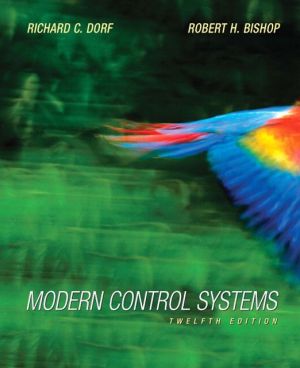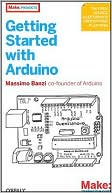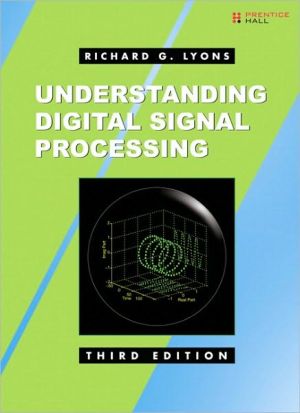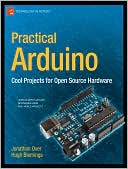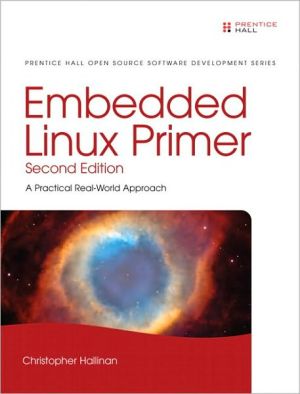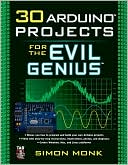Modern Control Systems
Modern Control Systems, 12e, is ideal for an introductory undergraduate course in control systems for engineering students.\ Written to be equally useful for all engineering disciplines, this text is organized around the concept of control systems theory as it has been developed in the frequency and time domains. It provides coverage of classical control, employing root locus design, frequency and response design using Bode and Nyquist plots. It also covers modern control methods based on...
Search in google:
Written for a senior-level course, this engineering textbook presents the concepts of feedback control system theory as they have been developed in the frequency and time domains, discussing such topics as robust control systems, state variable models, computer control systems, internal model control, and robust PID controllers. The tenth edition offers Matlab files and Simulink simulations on a companion web site. Annotation ©2004 Book News, Inc., Portland, OR Booknews Organized around the concepts of control system theory as they have been developed in the frequency and time domains, this senior level engineering textbook stresses physical system modeling and practical control system designs with realistic system specifications. The ninth edition integrates a companion web site and the use of Simulink. Annotation c. Book News, Inc., Portland, OR (booknews.com)
PREFACE: \ Preface\ MODERN CONTROL SYSTEMS—THE BOOK\ The Mars Pathfinder spacecraft was sent aloft aboard a Delta II expendable launch vehicle on December 4,1996 to begin a seven-month journey to the Red Planet. The Pathfinder mission, one of the first of the NASA Discovery-class missions, was the first mission to land on Mars since the successful Viking spacecraft over two decades ago. After traveling over 497,418,000 km, the spacecraft impacted the Martian surface on July 4,1997 with a velocity of about 18 m/s. Upon impact the spacecraft bounced up approximately 15 meters, then continued to bounce another 15 times and rolled to a stop about 1 km from the initial impact point. The landing site is known as the Sagan Memorial Station and is located in the Ares Vallis region at 19.33 N, 33.55 W. Pathfinder deployed the first-ever autonomous rover vehicle, known as the Sojourner, to explore the landing site area. The mobile Sojourner had a mass of 10.5 kilograms and was designed to roam in a 300-m2 area for around 30 days. The 0.25-m2 solar array provided 16 watt-hours of peak power and the primary battery provided about 150 watt-hours of power. The steering control of this vehicle had to be accurate and had to limit the power consumption. Control engineers play a critical role in the success of the planetary exploration program. The role of autonomous vehicle spacecraft control systems will continue to increase as flight computer hardware and operating systems improve. In fact, Pathfinder used a commercially produced, multitasking computer operating system hosted in a 32-bit radiation-hardened workstation with1-gigabyte storage, programmable in C. This is quite an advancement over the Apollo computers with a fixed (read-only) memory of 36,864 words (one word was 16 bits) together with an erasable memory of 2,048 words. The Apollo "programming language" was a pseudocode notation encoded and stored as a list of data words "interpreted" and translated into a sequence of subroutine links. Interesting real-world problems, such as planetary mobile rovers like Sojourner, are used as illustrative examples throughout the book. For example, a mobile rover design problem is discussed in the Design Example in Section 4.8.\ Control engineering is an exciting and a challenging field. By its very nature, control engineering is a multidisciplinary subject, and it has taken its place as a core course in the engineering curriculum. It is reasonable to expect different approaches to mastering and practicing the art of control engineering. Since the subject has a strong mathematical foundation, one might approach it from a strictly theoretical point of view, emphasizing theorems and proofs. On the other hand, since the ultimate objective is to implement controllers in real systems, one might take an ad hoc approach relying only on intuition and hands-on experience when designing feedback control systems. Our approach is to present a control engineering methodology that, while based on mathematical fundamentals, stresses physical system modeling and practical control system designs with realistic system specifications.\ We believe that the most important and productive approach to learning is for each of us to rediscover and recreate anew the answers and methods of the past. Thus the ideal is to present the student with a series of problems and questions and point to some of the answers that have been obtained over the past decades. The traditional method—to confront the student not with the problem but with the finished solution—is to deprive the student of all excitement, to shut off the creative impulse, to reduce the adventure of humankind to a dusty heap of theorems. The issue, then, is to present some of the unanswered and important problems that we continue to confront, for it may be asserted that what we have truly learned and understood, we discovered ourselves.\ The purpose of this book is to present the structure of feedback control theory and to provide a sequence of exciting discoveries as we proceed through the text and problems. If this book is able to assist the student in discovering feedback control system theory and practice, it will have succeeded.\ THE AUDIENCE\ This text is designed for an introductory undergraduate course in control systems for engineering students. There is very little demarcation between aerospace, chemical, electrical, industrial, and mechanical engineering in control system practice; therefore this text is written without any conscious bias toward one discipline. Thus it is hoped that this book will be equally useful for all engineering disciplines and, perhaps, will assist in illustrating the utility of control engineering. The numerous problems and examples represent all fields, and the examples of the sociological, biological, ecological, and economic control systems are intended to provide the reader with an awareness of the general applicability of control theory to many facets of life. We believe that exposing students of one discipline to examples and problems from other disciplines will provide them with the ability to see beyond their own field of study. Many students pursue careers in engineering fields other than their own. For example, many electrical and mechanical engineers find themselves in the aerospace industry working alongside aerospace engineers. We hope this introduction to control engineering will give students a broader understanding of control system design and analysis.\ In its first eight editions, Modern Control Systems has been used in senior-level courses for engineering students at more than 400 colleges and universities. It also has been used in courses for engineering graduate students with no previous background in control engineering.\ THE NINTH EDITION\ A companion website has been developed for students and faculty using the ninth edition. The website contains practice exercises and exam problems, all the MATLAB m-files and Simulink simulations in the book, Laplace and z-transform tables, written materials on matrix algebra, complex numbers, and symbols, units, and conversion factors. An icon will appear in the book margin whenever there is additional related material on the website. Also, since the website provides a mechanism for continuously updating and adding control related materials of interest to students and professors, it is advisable to visit the website regularly during the semester or quarter when taking the course. The MCS website address is ...
PrefaceAbout the AuthorsChapter 1 Introduction to Control Systems 11.1 Introduction 21.2 Brief History of Automatic Control 51.3 Examples of Control Systems 101.4 Engineering Design 171.5 Control System Design 181.6 Mechatronic Systems 211.7 Green Engineering 251.8 The Future Evolution of Control Systems 271.9 Design Examples 281.10 Sequential Design Example: Disk Drive Read System 321.11 Summary 34Skills Check 35Exercises 37Problems 39Advanced Problems 44Design Problems 46Terms and Concepts 48Chapter 2 Mathematical Models of Systems 492.1 Introduction 502.2 Differential Equations of Physical Systems 502.3 Linear Approximations of Physical Systems 552.4 The Laplace Transform 582.5 The Transfer Function of Linear Systems 652.6 Block Diagram Models 792.7 Signal-Flow Graph Models 842.8 Design Examples 902.9 The Simulation of Systems Using Control Design Software 1132.10 Sequential Design Example: Disk Drive Read System 1282.11 Summary 130Skill Check 131Exercises 135Problems 141Advanced Problems 153Design Problems 155Computer Problems 157Terms and Concepts 159Chapter 3 State Variable Models 1613.1 Introduction 1623.2 The State Variables of a Dynamic System 1623.3 The State Differential Equation 1663.4 Signal-Flow Graph and Block Diagram Models 1713.5 Alternative Signal-Flow Graph and Block Diagram Models 1823.6 The Transfer Function from the State Equation 1873.7 The Time Response and the State Transition Matrix 1893.8 Design Examples 1933.9 Analysis of State Variable Models Using Control Design Software 2063.10 Sequential Design Example: Disk Drive Read System 2093.11 Summary 213SkillS Check 214Exercises 217Problems 220Advanced Problems 227Design Problems 230Computer Problems 231Terms and Concepts 232Chapter 4 Feedback Control System Characteristics 2344.1 Introduction 2354.2 Error Signal Analysis 2374.3 Sensitivity of Control Systems to Parameter Variations 2394.4 Disturbance Signals in a Feedback Control System 2424.5 Control of the Transient Response 2474.6 Steady-State Error 2504.7 The Cost of Feedback 2534.8 Design Examples 2544.9 Control System Characteristics Using Control Design Software 2684.10 Sequential Design Example: Disk Drive Read System 2734.11 Summary 277Skills Check 279Exercises 283Problems 287Advanced Problems 293Design Problems 296Computer Problems 300Terms and Concepts 303Chapter 5 The Performance of Feedback Control Systems 3045.1 Introduction 3055.2 Test Input Signals 3055.3 Performance of Second-Order Systems 3085.4 Effects of a Third Pole and a Zero on the Second-Order System Response 3145.5 The s-Plane Root Location and the Transient Response 3205.6 The Steady-State Error of Feedback Control Systems 3225.7 Performance Indices 3305.8 The Simplification of Linear Systems 3395.9 Design Examples 3425.10 System Performance Using Control Design Software 3565.11 Sequential Design Example: Disk Drive Read System 3605.12 Summary 364Skills Check 364Exercises 368Problems 371Advanced Problems 377Design Problems 379Computer Problems 382Terms and Concepts 384Chapter 6 The Stability of Linear Feedback Systems 3866.1 The Concept of Stability 3876.2 The Routh-Hurwitz Stability Criterion 3916.3 The Relative Stability of Feedback Control Systems 3996.4 The Stability of State Variable Systems 4016.5 Design Examples 4046.6 System Stability Using Control Design Software 4136.7 Sequential Design Example: Disk Drive Read System 4216.8 Summary 424Skills Check 425Exercises 428Problems 430Advanced Problems 435Design Problems 438Computer Problems 440Terms and Concepts 442Chapter 7 The Root Locus Method 4437.1 Introduction 4447.2 The Root Locus Concept 4447.3 The Root Locus Procedure 4497.4 Parameter Design by the Root Locus Method 4677.5 Sensitivity and the Root Locus 4737.6 PID Controllers 4807.7 Negative Gain Root Locus 4927.8 Design Examples 4967.9 The Root Locus Using Control Design Software 5107.10 Sequential Design Example: Disk Drive Read System 5167.11 Summary 518Skills Check 522Exercises 526Problems 530Advanced Problems 539Design Problems 543Computer Problems 549Terms and Concepts 551Chapter 8 Frequency Response Methods 5538.1 Introduction 5548.2 Frequency Response Plots 5568.3 Frequency Response Measurements 5778.4 Performance Specifications in the Frequency Domain 5798.5 Log Magnitude and Phase Diagrams 5828.6 Design Examples 5838.7 Frequency Response Methods Using Control Design Software 5968.8 Sequential Design Example: Disk Drive Read System 6028.9 Summary 603Skills Check 608Exercises 613Problems 616Advanced Problems 626Design Problems 628Computer Problems 631Terms and Concepts 633Chapter 9 Stability in the Frequency Domain 6349.1 Introduction 6359.2 Mapping Contours in the s-Plane 6369.3 The Nyquist Criterion 6429.4 Relative Stability and the Nyquist Criterion 6539.5 Time-Domain Performance Criteria in the Frequency Domain 6619.6 System Bandwidth 6689.7 The Stability of Control Systems with Time Delays 6689.8 Design Examples 6739.9 PID Controllers in the Frequency Domain 6919.10 Stability in the Frequency Domain Using Control Design Software 6929.11 Sequential Design Example: Disk Drive Read System 7009.12 Summary 703Skills Check 711Exercises 715Problems 721Advanced Problems 731Design Problems 735Computer Problems 740Terms and Concepts 742Chapter 10 The Design of Feedback Control Systems 74310.1 Introduction 74410.2 Approaches to System Design 74510.3 Cascade Compensation Networks 74710.4 Phase-Lead Design Using the Bode Diagram 75110.5 Phase-Lead Design Using the Root Locus 75710.6 System Design Using Integration Networks 76410.7 Phase-Lag Design Using the Root Locus 76710.8 Phase-Lag Design Using the Bode Diagram 77210.9 Design on the Bode Diagram Using Analytical Methods 77610.10 Systems with a Prefilter 77810.11 Design for Deadbeat Response 78110.12 Design Examples 78310.13 System Design Using Control Design Software 79610.14 Sequential Design Example: Disk Drive Read System 80210.15 Summary 804Skills Check 806Exercises 810Problems 814Advanced Problems 823Design Problems 826Computer Problems 831Terms and Concepts 833Chapter 11 The Design of State Variable Feedback Systems 83411.1 Introduction 83511.2 Controllability and Observability 83511.3 Full-State Feedback Control Design 84111.4 Observer Design 84711.5 Integrated Full-State Feedback and Observer 85111.6 Reference Inputs 85711.7 Optimal Control Systems 85911.8 Internal Model Design 86911.9 Design Examples 87311.10 State Variable Design Using Control Design Software 88211.11 Sequential Design Example: Disk Drive Read System 88811.12 Summary 890Skills Check 890Exercises 894Problems 896Advanced Problems 900Design Problems 903Computer Problems 906Terms and Concepts 908Chapter 12 Robust Control Systems 91012.1 Introduction 91112.2 Robust Control Systems and System Sensitivity 91212.3 Analysis of Robustness 91612.4 Systems with Uncertain Parameters 91812.5 The Design of Robust Control Systems 92012.6 The Design of Robust PID-Controlled Systems 92612.7 The Robust Internal Model Control System 93212.8 Design Examples 93512.9 The Pseudo-Quantitative Feedback System 95212.10 Robust Control Systems Using Control Design Software 95312.11 Sequential Design Example: Disk Drive Read System 95812.12 Summary 960Skills Check 961Exercises 965Problems 967Advanced Problems 971Design Problems 974Computer Problems 980Terms and Concepts 982Chapter 13 Digital Control Systems 98413.1 Introduction 98513.2 Digital Computer Control System Applications 98513.3 Sampled-Data Systems 98713.4 The z-Transform 99013.5 Closed-Loop Feedback Sampled-Data Systems 99513.6 Performance of a Sampled-Data, Second-Order System 99913.7 Closed-Loop Systems with Digital Computer Compensation 100113.8 The Root Locus of Digital Control Systems 100413.9 Implementation of Digital Controllers 100813.10 Design Examples 100913.11 Digital Control Systems Using Control Design Software 101813.12 Sequential Design Example: Disk Drive Read System 102313.13 Summary 1025Skill Check 1025Exercises 1029Problems 1031Advanced Problems 1033Design Problems 1034Computer Problems 1036Terms and Concepts 1037Appendix A Matlab Basics 1038References 1056Index 1071Appendix B MathScript RT Module BasicsAppendix C Symbols, Units, and Conversion FactorsAppendix D Laplace Transform PairsAppendix E An Introduction to Matrix AlgebraAppendix F Decibel ConversionAppendix G Complex NumbersAppendix H z-Transform Paris PrefaceAppendix I Discrete-Time Evaluation of the Time Response
\ BooknewsOrganized around the concepts of control system theory as they have been developed in the frequency and time domains, this senior level engineering textbook stresses physical system modeling and practical control system designs with realistic system specifications. The ninth edition integrates a companion web site and the use of Simulink. Annotation c. Book News, Inc., Portland, OR (booknews.com)\ \
